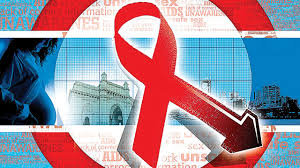Source: teenvogue.com
There’s an infamous Australian advertisement that has a grim reaper tossing a bowling ball down an alley in the direction of scared white families who serve as pins. “At first only gays and IV drug users were being killed by AIDS,” the cryptic voice narrates the scene. “But now, we know every one of us could be devastated by it.” Created in 1987, the commercial was indicative of the general sentiment toward the autoimmune disease at time, which was outright fear.
Thirty-two years later it’s no wonder that when celebrities like Johnathan Van Ness share with the world that they have HIV, it’s considered another form of bravely “coming out.” Since the 1980s, there has been a stigma about HIV/AIDS that Sarah Hall’s play, As Much As I Can, hopes to tackle.
“At its core, it’s a love letter,” Sarah tells Teen Vogue about the award-winning play that recently showed at NYC’s Public Theater to a sold-out audience. “It is intended to make sure that these men feel seen, feel heard, and feel loved. It’s also an opportunity for the audience to be active participants in the story and to help us create change.”
Unlike past portrayals of the sexually transmitted disease (i.e. Rent or Falsetto), this immersive play has a majority Black cast and revolves around three gay men who are coming to terms with their sexuality while also dealing with the prevalence of HIV in their community. Interspersed with a church scene, drag show performance, and barbershop talk, the play hopes to make the topic of preventative care, transmission, and treatment approachable.
“The biggest misnomer about HIV/AIDS today is that the disease isn’t an issue anymore because of medication,” says Emil Wilbekin, founder of Native Son, an advocacy and networking group for professional black gay men. “Unfortunately, Black gay men suffer the highest rates of infection in the United States today. The CDC reports that by 2020, one in two Black men who have sex with men will be HIV positive — that is half of our population.”
Emil, who has HIV and has been a huge proponent of dismembering the stigma, believes the best way people can help is by showing up. “The best way that people outside of the LGBTQI+ community can support those living with HIV/AIDS is to be compassionate, empathetic, and supportive,” he says. “Being human and loving goes a long way.”
Currently, Blacks/African Americans account for a higher proportion of new HIV diagnoses and people living with HIV, compared to other races/ethnicities — 43 percent of all new diagnosis to be exact. HIV is preventable with medications like PrEP, but Sarah believes the numbers and common misnomers about HIV have not highlighted the urgency of support needed in the Black, gay community.
“There are also so many misconceptions about why Black queer men are facing these infection rates and the statistics don’t communicate the whole story,” she says. “Black queer men are not able to access the standard of care that is available to treat and prevent HIV in the way that they should.”
“We need to change that on an institutional level. Equally as importantly we need to develop an extremely strong support system around these men because they deserve it and because it makes a big impact on the treatment and prevention of HIV.”
